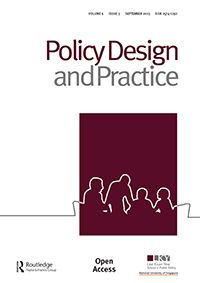Does Performance-Related-Pay work? Recommendations for practice based on a meta-analysis
IF 2.6
Q1 PUBLIC ADMINISTRATION
引用次数: 0
Abstract
Abstract Performance-related-pay (PRP) is a controversial topic. Views about its impact are mixed. Through a meta-analysis of studies in public administration, we aim to provide an evidence-based answer to the question: Does PRP work? Our meta-analysis finds a statistically significant, positive but small population effect size between PRP and employee and performance outcomes. Subgroup analyses show that PRPs impact is contingent upon the type of outcome, geographical context, government level, and data source rather than universal in nature. Effect sizes decrease when performance outcomes are measured as opposed to employee outcomes; in USA and European contexts compared to Asian contexts; at the local level compared to the federal level; and when multiple source or experimental data are used compared to single source data. Based on our findings and PRP literature, we construct a flowchart to support practitioners in deciding whether PRP may “work” for them while avoiding its many and typical pitfalls. Evidence for practice Our meta-analysis demonstrates that the impact of performance-related-pay (PRP) on employee and performance outcomes in public administration is statistically significant and positive; however, the fact that the effects sizes are small leads us to conclude that PRP is not a “magic bullet”. Intriguingly, performance outcomes are less impacted by PRP than employee-related outcomes like work motivation and job satisfaction, implying that PRP might carry some motivational benefits while its benefits for better performance outcomes are questionable. PRP seemingly works better in Asia than in Europe or the USA – arguably due to existing predispositions regarding the effects of rewards and monetary incentives – and also seems more effective at the federal than the local government level. Much of the small positive impact uncovered in this meta-analysis seems to be the result of the type of data used in studies. Specifically, studies using multiple or experimental data show a trivial and statistically insignificant overall impact. Practitioners thus need to carefully assess how they will evaluate PRPs impact to avoid biases due to data type. An evidence-based flowchart including questions at the macro (cultural and societal considerations), meso (specific organizational characteristics), and micro (individual and team behavior) level is presented as a support tool for practitioners in deciding upon and designing PRP systems in their organization.绩效薪酬制度有效吗?基于荟萃分析的实践建议
绩效薪酬(PRP)是一个有争议的话题。对其影响的看法褒贬不一。通过对公共行政研究的荟萃分析,我们的目标是为这个问题提供一个基于证据的答案:PRP有效吗?我们的荟萃分析发现,PRP与员工和绩效结果之间存在统计学上显著的正但较小的群体效应。分组分析表明,减贫方案的影响取决于结果类型、地理环境、政府级别和数据来源,而非普遍性。当衡量绩效结果而不是员工结果时,效应值会降低;在美国和欧洲背景下与亚洲背景相比;在地方一级与联邦一级相比;当使用多源或实验数据与单一源数据进行比较时。基于我们的发现和PRP文献,我们构建了一个流程图,以支持从业者决定PRP是否可以“工作”,同时避免其许多典型的陷阱。我们的荟萃分析表明,绩效薪酬(PRP)对公共行政部门员工和绩效结果的影响具有统计学显著性和正相关;然而,效应大小很小的事实使我们得出结论,PRP不是“灵丹妙药”。有趣的是,绩效结果受PRP的影响小于与员工相关的结果,如工作动机和工作满意度,这意味着PRP可能会带来一些激励效益,但它对更好的绩效结果的好处是值得怀疑的。PRP似乎在亚洲比在欧洲或美国更有效——可以说是由于现有的关于奖励和金钱激励的倾向——而且在联邦政府层面似乎比地方政府层面更有效。在这项荟萃分析中发现的许多小的积极影响似乎是研究中使用的数据类型的结果。具体来说,使用多个或实验数据的研究显示了微不足道的和统计上不显著的总体影响。因此,从业者需要仔细评估他们将如何评估PRPs的影响,以避免由于数据类型造成的偏差。基于证据的流程图包括宏观(文化和社会考虑),中观(特定的组织特征)和微观(个人和团队行为)层面的问题,作为从业者在其组织中决定和设计PRP系统的支持工具。
本文章由计算机程序翻译,如有差异,请以英文原文为准。
求助全文
约1分钟内获得全文
求助全文
来源期刊

Policy Design and Practice
PUBLIC ADMINISTRATION-
CiteScore
10.30
自引率
4.30%
发文量
19
审稿时长
13 weeks
期刊介绍:
 求助内容:
求助内容: 应助结果提醒方式:
应助结果提醒方式:


